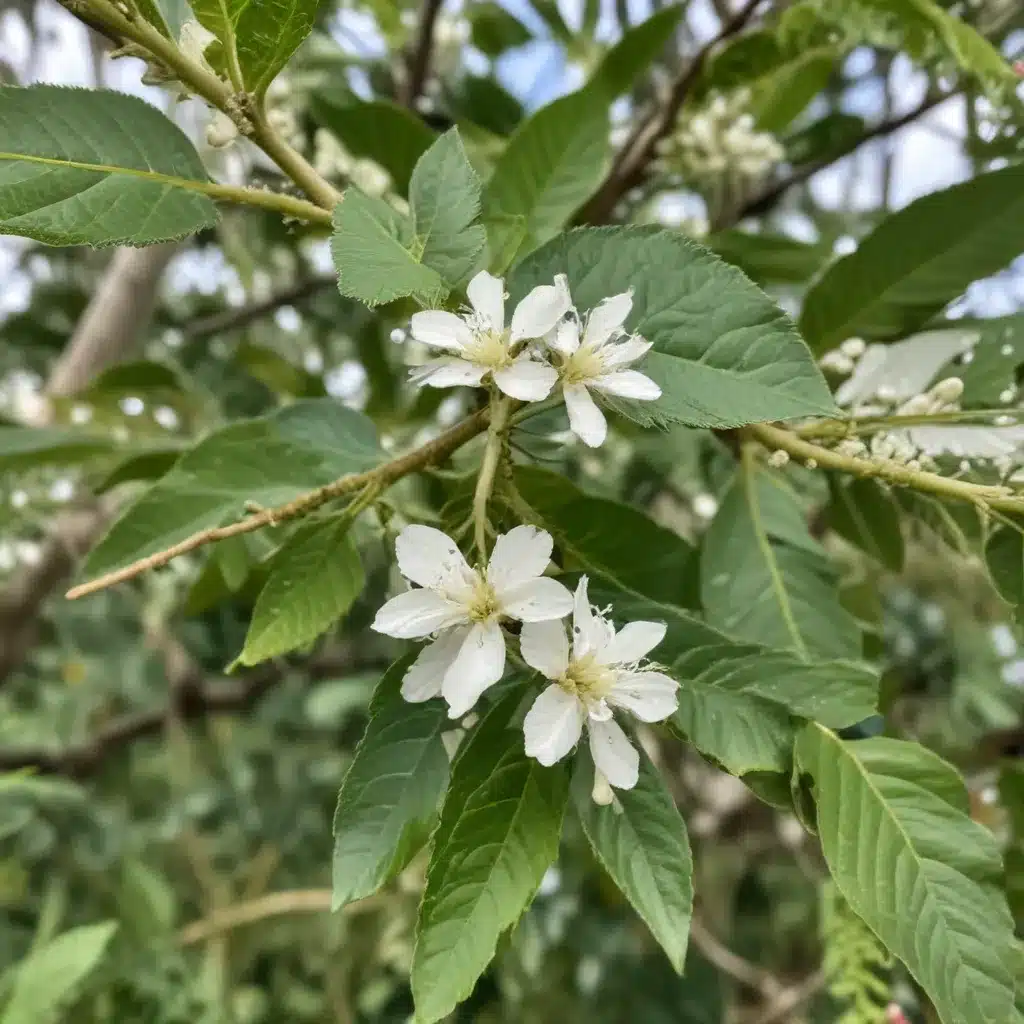
The spiraling whitefly (Aleurodicus dispersus) is a notorious pest that has plagued the subtropical landscapes of South Florida for decades. This invasive species, native to the Caribbean, has steadily spread across the region, infesting a wide range of ornamental trees, palms, and shrubs. As a sap-sucking insect, the spiraling whitefly can inflict severe damage if left unchecked, weakening host plants and rendering them unsightly through the accumulation of sooty mold.
Recognizing Spiraling Whitefly Infestations
The presence of spiraling whiteflies is often first detected by the distinct white, waxy “spirals” they leave behind on the undersides of leaves. These spiral patterns, created by the adult insects as they feed, are a telltale sign of their infestation. Additionally, the whiteflies themselves can be observed taking flight in a cloud when the foliage is disturbed. Closely inspecting the leaves may also reveal the presence of the insects’ tiny, yellow eggs and the long, filamentous wax deposits produced by the nymphal stages.
Proactive Pest Management Strategies
Addressing a spiraling whitefly infestation requires a multifaceted approach. While forceful water sprays can initially dislodge and discourage the pests, more persistent control measures are often necessary, especially for well-established infestations. According to the University of Florida IFAS Extension, the systemic insecticide Bayer Rose & Flower (active ingredient: imidacloprid) has proven to be an effective solution. This product is applied to the soil, where it is absorbed by the plant’s roots and translocated through the sap, eliminating whiteflies and other sap-feeding insects that attempt to feed on the treated foliage.
For severe infestations, it may be necessary to apply the insecticide twice, at two-month intervals, to gain full control. Afterward, a maintenance schedule of 2-4 applications per year can help prevent future outbreaks. Homeowners should be mindful to treat all affected plants in the immediate area, as whiteflies are known to rapidly spread between a wide range of host species, including hibiscus, bougainvillea, and various citrus and avocado trees.
Pruning and Sanitation Practices
Complementing chemical control, proper pruning and sanitation can also play a crucial role in managing spiraling whitefly populations. Removing and disposing of heavily infested leaves and branches can significantly reduce the insects’ breeding sites and food sources. Additionally, maintaining overall plant health through regular fertilization and watering can help trees and shrubs better withstand and recover from whitefly infestations.
Tropical Storm Readiness for Palms
South Florida’s subtropical climate and exposure to frequent tropical storms and hurricanes necessitate special consideration for the region’s abundant palm tree populations. Proactive measures to ensure palm resilience can safeguard valuable landscaping investments and mitigate storm-related damage.
Resilient Palm Species Selection
When planning new plantings or replacing storm-damaged palms, it is crucial to select species known for their wind resistance and ability to withstand the impacts of severe weather. According to the University of Florida IFAS Extension, hardy native species such as the Sabal palm (Sabal palmetto) and the Paurotis palm (Acoelorrhaphe wrightii) are excellent choices for South Florida landscapes. These palms, along with adapted cultivars of the queen palm (Syagrus romanzoffiana) and the coconut palm (Cocos nucifera), demonstrate superior storm resilience.
Proper Tree Staking and Anchoring
Ensuring palms are properly staked and anchored during the establishment phase is critical to their long-term stability. Correct staking techniques, using multiple supporting points, can help young palms develop deep, robust root systems and withstand high winds. As the palms mature, the stakes should be gradually removed to allow for natural trunk development and flexibility.
Post-Storm Recovery and Rehabilitation
In the aftermath of a tropical storm or hurricane, prompt attention to damaged palms can greatly improve their chances of recovery. Removing any broken or severely damaged fronds, while leaving healthy foliage intact, can help the palm conserve energy and redirect resources toward new growth. Providing supplemental irrigation and balanced fertilization can also aid in the rehabilitation process, helping palms regain their vigor and resilience.
South Florida Soil Conditions
The unique soil conditions of South Florida pose both challenges and opportunities for successful tree and palm cultivation. Understanding the intricacies of the region’s soils is essential for optimizing plant health and ensuring long-term viability.
Understanding Soil pH and Nutrient Levels
Many South Florida soils are naturally acidic, with pH levels often falling below the ideal range for optimal palm and tree growth. Regularly testing soil pH and amending it with appropriate alkaline materials, such as lime, can help raise the pH to a more suitable level, typically between 6.0 and 7.0. In addition to pH, monitoring and addressing nutrient deficiencies, particularly in phosphorus and potassium, is crucial for maintaining plant vigor and disease resistance.
Amending Soil for Optimal Palm Growth
Incorporating organic matter, such as compost or well-rotted manure, can significantly improve South Florida’s often sandy, nutrient-poor soils. These amendments not only enhance soil structure and water-holding capacity but also provide a steady supply of essential macro- and micronutrients for palms and other tropical species. Careful attention to soil preparation before planting can set the stage for thriving, long-lived trees and palms.
Drainage Considerations for Palms
Proper drainage is a crucial factor in the success of palm cultivation in South Florida. Many palm species are susceptible to root rot and other moisture-related issues if planted in areas with poor drainage or prone to standing water. Ensuring adequate soil drainage, either through the creation of raised planting beds or the installation of subsurface drainage systems, can help mitigate these concerns and create an optimal growth environment for palms.
Conclusion
By diligently addressing the challenges posed by the spiraling whitefly, prioritizing tropical storm resilience, and understanding the nuances of South Florida’s soil conditions, homeowners and landscape professionals can cultivate thriving, beautiful palm and tree populations that enhance the region’s unique subtropical charm. For more expert guidance on South Florida tree care, visit SouthFloridaTrees.com.


